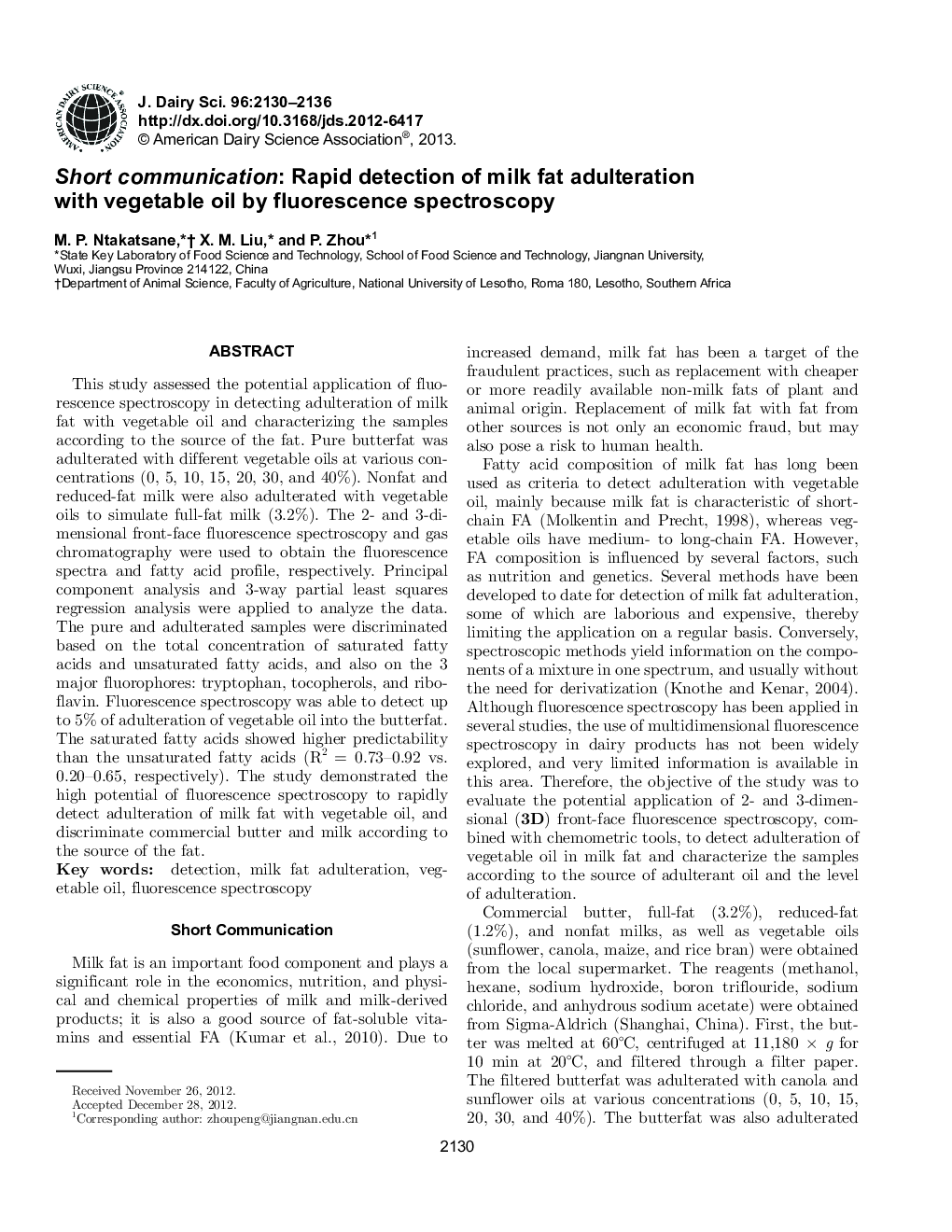| Article ID | Journal | Published Year | Pages | File Type |
|---|---|---|---|---|
| 10978980 | Journal of Dairy Science | 2013 | 7 Pages |
Abstract
This study assessed the potential application of fluorescence spectroscopy in detecting adulteration of milk fat with vegetable oil and characterizing the samples according to the source of the fat. Pure butterfat was adulterated with different vegetable oils at various concentrations (0, 5, 10, 15, 20, 30, and 40%). Nonfat and reduced-fat milk were also adulterated with vegetable oils to simulate full-fat milk (3.2%). The 2- and 3-dimensional front-face fluorescence spectroscopy and gas chromatography were used to obtain the fluorescence spectra and fatty acid profile, respectively. Principal component analysis and 3-way partial least squares regression analysis were applied to analyze the data. The pure and adulterated samples were discriminated based on the total concentration of saturated fatty acids and unsaturated fatty acids, and also on the 3 major fluorophores: tryptophan, tocopherols, and riboflavin. Fluorescence spectroscopy was able to detect up to 5% of adulteration of vegetable oil into the butterfat. The saturated fatty acids showed higher predictability than the unsaturated fatty acids (R2 = 0.73-0.92 vs. 0.20-0.65, respectively). The study demonstrated the high potential of fluorescence spectroscopy to rapidly detect adulteration of milk fat with vegetable oil, and discriminate commercial butter and milk according to the source of the fat.
Related Topics
Life Sciences
Agricultural and Biological Sciences
Animal Science and Zoology
Authors
M.P. Ntakatsane, X.M. Liu, P. Zhou,
